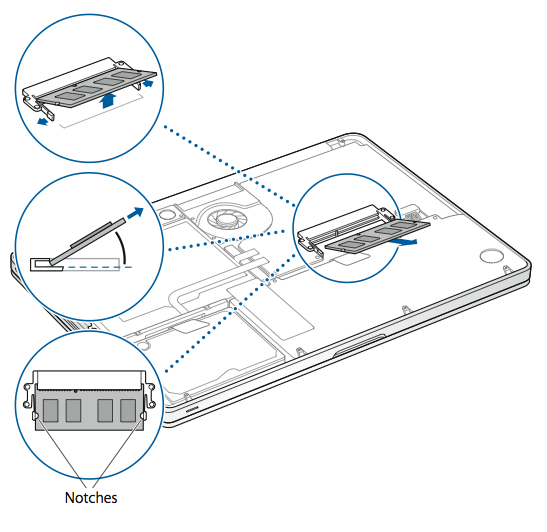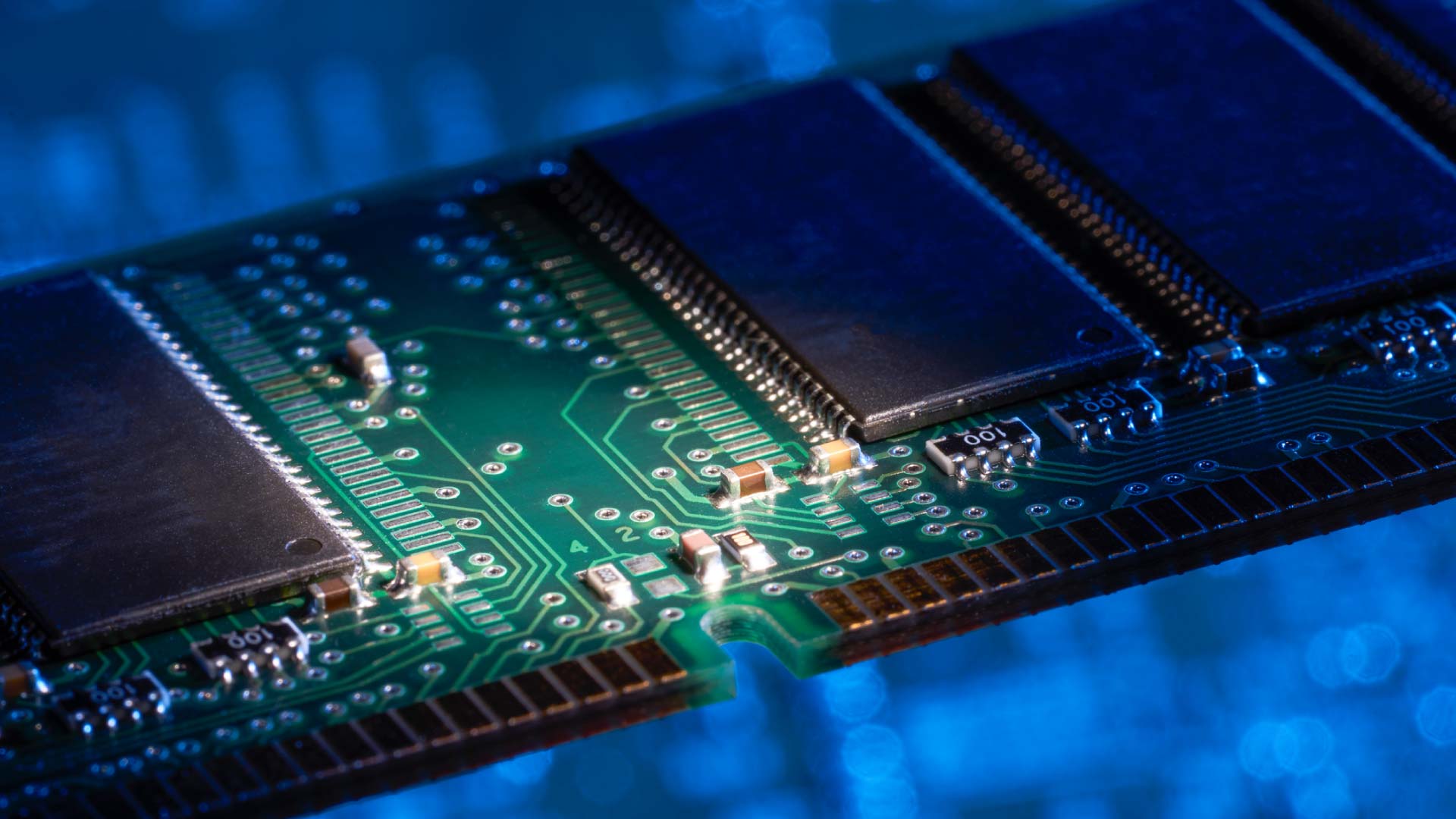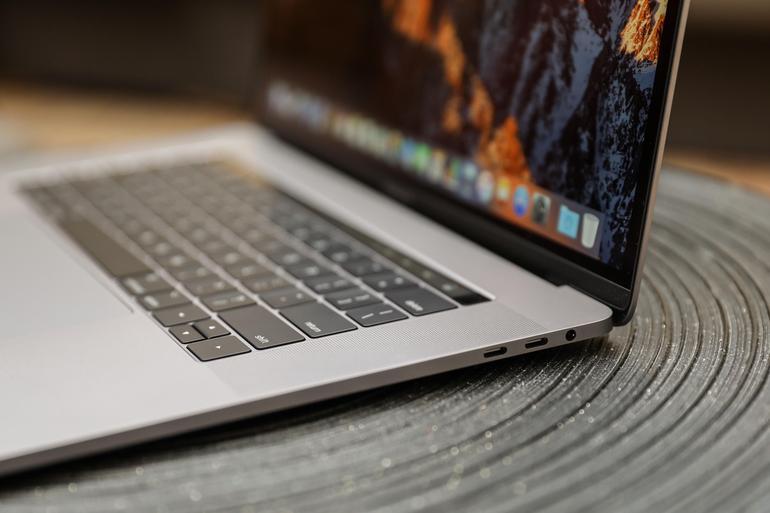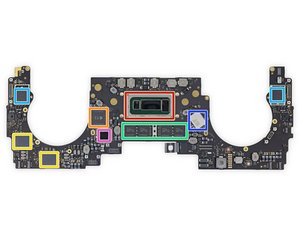- How To Reset Ram On Macbook Pro 2012
- How To Clear Ram On Macbook Pro 2019
- How To Clear Memory On Macbook Pro
- How To Clear Ram Memory On Macbook Pro
- How To Clear System Memory On Macbook Pro
Step 5: Erase MacBook, MacBook Air/Pro, iMac. After finishing the above steps, you are now offically able to wipe your MacBook, MacBook Pro, MacBook Air or iMac. You need to erase your Mac in recovery mode. Enter your Mac into recovery mode. Power off your Mac and then reboot it. The List of MacBook Pro Models, Which Have Removable Memory. Under this sentence, you can notice the list of models that are compatible with the brief guidelines to how to replace memory in MacBook Pro. MacBook Pro (13-inch, since mid-2012) MacBook Pro (13-inch, since late 2011) MacBook Pro (13-inch, since early 2011).
If you have been using Mac from a long time that you may know that OS X saves a ton of cache files on the hard disk.
System Cache: It's produced in a device whenever an app, browser, the system performs any task and the any built-in system services that run your Mac's OS. However, cache performs a critical function by creating a shortcut to the task that you have already performed in the system. Basically, when you open a same task again and again, it will re-open very fast by loading the cache files.
App Cache: App cache are produced by apps and system or third party applications to save temporary information such as websites that are visited in your favorite browser to speed up the loading process. So if you consider then it can be said that cache are important and rather good to make the apps faster. However, there are also certain disadvantages of cache that could create bugs and rather have negative effects like crashing the app or even slow it down to death. And there are many apps that makes unnecessary amount of data that are totally useless and will eat up all the space in your system. These cache are supposed to be erased from the device and a user must clear them regularly to save space on Mac. So, to sustain smooth performance for your Mac device, it is necessary for the users to clear App cache regularly.
But the monotonous question is 'where to begin the excursion from?' Why not start the excursion of cache cleaning here and now. The methods below are no less than the effective solutions dictated by Mac experts. So here they are at your service..
Part #1: How Does Cache Affect Your Mac?
But, many times these useless cache files can get damaged due to malfunction, failed software updates which could cause issues and slow down the system. What's more, even if you have uninstalled the software, these cache files don't get deleted automatically and stays on the system. By the time goes, these cache files gets bigger and bigger and takes up GBs of space on the system which may cause low memory storage space. Even if they are temporary, no one is actually removing them. So over time, these cache files takes you storage space and will make it so slow that you won't be able to use the system. Cache files are both extremely necessary and utterly useless after a while, as they become a storage killer, dragging your Mac's performance to a laughable speed.
Part #2: Delete App Cache Files Manually on Mac
The manual guideline is always the first priority of every user as there are no troubles of tool downloading, etc. And this is exactly what we are going to follow up. To know the locations where you can clean the unused app data, read the steps below carefully:
Step 1. Open up 'Finder' utility and then choose 'Go'.
Step 2. Click on 'Go to Folder' from the further options shown.

Step 3. Type -/Library and hit 'Enter'.
Step 4. Click on 'Cache' folder. Doing so selects everything in the 'Caches' folder.
Step 5. Now in the Cache folder, choose the specific files or the entire lot and place the cache items to the Trash and the cleaning is done.
Cons –
- While clearing the cache, there is no specification of App cache.
- Even if the caches are deleted, App caches remain within the system completely hidden from the user sight.
Part #3: Clear Caches on Mac using CleanGeeker
Disappointments are bound to come if you are recklessly trying out the any tools and methods mentioned hitherto or elsewhere. But there is one such tool which will not fail you, the name is Tunesbro CleanGeeker. In few simple steps, CleanGeeker can clean all kinds of junk files from your Mac, though we would focus primarily on the App cache. It makes deleting cache files on Mac as easy as can be.
CleanGeeker - Delete All Apps Caches on Mac with just 1 Click
- It can clean Junk Files, App Caches, Duplicate Files, Large Sized garbage files, etc.
- Three types of scanning are available, namely App Scan; Junk Scan; Deep Scan.
- Clear browser cookies and mail attachments easily.
- More other features >>
Step 1Download and Install CleanGeeker on Your Mac
First of all, avail your system with CleanGeeker and install with necessary step instructions. On the tool's screen, click on 'Home' tab on the left and here you can clearly discern the total memory, used space, etc.
Step 2Scan All App Caches on Mac
Go now to the 'Junk Clean' section below in the same line of 'Home' option and click on it. Here you get to see all the junk files associated with your recently installed apps or previously installed apps.
Step 3Start to Delete App Caches on Your Mac OS X
Select your apps by ticking the checkboxes next to it and once done, click 'Delete' button at the bottom right corner of the screen.
CleanGeeker can collect and clear associated cache items of all those apps which are not installed formerly on your Mac but their junk items remain within the system. Mere manual deletion or uninstallation of Apps sometimes don't flush out the real problem, but with this last tool you can root out once and for all from your Mac. The previous two methods can equally give you the aid you need, but the guarantee that CleanGeeker holds is dearth and unparallel. So choose wisely after all it's your Mac which matters a lot.
Related Articles & Tips
“No matter what I do, my Mac is still slow”, an average tech-consultant hears this phrase multiple times a day. Give a person even the most powerful computer, and pretty soon it will be cluttered with apps, extensions, and things that are too much for it to handle. To reverse it, one has to go back and сlean up the mess, removing memory agents one by one. Prepare for a fight — every byte of memory is at stake. So let’s put your Mac on a diet and get it more free RAM to breathe freely.
First, remove desktop clutter. Get a combination of Setapp apps that clear away unneeded desktop files.
Download Declutter Free“Your system has run out of application memory”
How do you know your Mac is low on memory? Floating “rainbow wheels” aside, you may notice your Mac now takes ages to load. You’ll also see many browser applications crashing. You’ll be also thrown warning messages as “Your system has run out of application memory”. To help it, you should first visit the Activity monitor to see memory usage on Mac.
How to check RAM usage on Mac
Go to Applications and type in Activity Monitor in the search bar. This invokes a good old Activity Monitor that should tell how much free memory you’ve got left.
A shortcut to open Activity Monitor:
Press F4 and start typing Activity Monitor in the search bar.
I’ve attached a screenshot from my Mac and as you can see my memory usage almost reached full capacity. Here’s what it all means:
App memory: taken by apps and processes
Wired memory: reserved by apps, can’t be freed up
Compressed: inactive, can be used by other apps
Swap used: memory used by macOS
Cached files: memory you can really use
Notice the colored graph under Memory Pressure. If your graph is all but red and yellow, your Mac is really gasping for fresh memory. It seems counter-intuitive, but “available memory” your Activity Monitor is not that important after all. In fact, it’s a system intended behavior to use all memory resources when available. On the contrary, the Memory Pressure graph is much more telling, so grow a habit to check this graph in the Activity Monitor every now and then.
How to check CPU usage on Mac
Open the CPU tab in Activity Monitor to keep in check CPU-heavy processes. Normally an app would be using 0-4% of CPU. If it takes abnormally more than that, go inside that particular item in the list and press the Quit button.

How to free up memory on Mac
Tip # 1. Remove Login Items to lower Mac memory usage
Login items are programs that load automatically upon Mac startup. Some of them covertly add themselves to the list and this is no good. If you’re looking to free up RAM, they are the first candidates for deletion. Don’t worry, you’re not deleting the app itself, you just stop it from auto-launching every time.
So, to remove Login Items and at the same time reduce your memory usage of your Mac, you need to:
- Open System Preferences and select Users & Groups.
- Click your nickname on the left.
- Select the Login Items tab.
- Check programs you don’t want to load as your Mac starts.
- Press the “–” sign below.
Now, you won’t see these apps pop up the moment you turn on your Mac. Although this method doesn’t require some superpowers of yours, some special Mac optimization and memory cleaner tools may do the job faster and ensure the smooth performance of your Mac. CleanMyMac X is an excellent example of such software. Here’s how to disable Login Items with CleanMyMac X:
- Download it for free and go to the Optimization tab.
- Check Login Items to see the list of apps that get opened when you start your Mac.
- Click Remove.
As you’ve already come to the Optimization module of CleanMyMac, you can also fix hung apps and heavy memory consumers there. In this way, you’ll free up the solid amount of RAM on Mac — 100% free of charge.
Tip # 2. Free up disk space if Mac is low on memory
The available space on your Mac’s drive translates into virtual memory. This comes to save you when you’ve run out of physical RAM. So now your computer relies on your hard drive space to keep your apps going.
The classic geek rule of thumb holds it that you should keep at least 20% of disk space on your startup drive. Not only this potentially reduces your future spending on iCloud storage but it also keeps your Mac speedier.
What to delete to free up space:
- Large unused files, like movies
- Old downloads
- Rarely used applications
- System junk
But here’s a simpler solution to save your time — clean up your drive with CleanMyMac X— the app I’ve mentioned above. Many users recommend it as an excellent way to free up more space because it searches for large & old files, useless system files, Photo junk, mail attachments and shows everything you can safely delete. Interestingly, it finds about 74 GB of junk on an average computer.
Extra trick: How to free up RAM on Mac with CleanMyMac X
If you have downloaded CleanMyMac, you may also take advantage of its amazing feature — the ability to free up RAM in a few seconds. Try this next time you see “Your system has run out of application memory” message.
- Go to the Maintenance tab on the left.
- Click Free Up RAM.
- Click Run.
As simple as that!
And you can do it even if you download a free version of the app.
Tip # 3. Clean up your Desktop

This tip always comes at the bottom of instructions and unfairly so as it is quite effective. Without even looking at your Desktop I would assume it’s cluttered with mountains of icons. Thing is, your macOS was designed in a way that it treats every Desktop icon as a little active window. The more icons, the heavier memory usage on Mac. So in order to release available memory resources, it’s recommended to keep your Desktop clean.
You don’t have to do it all by yourself. With apps like Declutter and Spotless, every desktop cleaning session will be scheduled in advance and executed automatically. Your only job is to define the rules on how your files should be organized.
Tip #4. Clear cache files
Another way to free up RAM on Mac is to clear it of cache files. Of course, it won’t save you gigabytes of space, but deleting cache regularly, you can help your Mac run faster and avoid system issues.
So, to remove cache files on your Mac, you need to:
- Open Finder.
- From the Go menu, select Go to Folder.
- Type ~/Library/Caches in the field and press Go.
- In the window that appears, you will see all your cache files.
- Press Command+A to select all files or delete files one by one.
- Enter your user name and password to confirm.
If you find some files still in the folder after you emptied it, maybe you have some windows open on your Mac. Just like that, you can save up some space on your Mac. Don’t forget to empty the bin afterward.
Tip # 5. Tune up Chrome’s Task Manager
Although Google Chrome is not the one to blame for massive memory usage, it can indeed affect your Mac's performance. If you use Chrome as your primary browser, you probably have many windows opened there. Chrome runs a lot of processes to ensure a fast browsing experience for you. So, it uses your RAM for storing your tabs, plugins, and extensions. Look at how many entries Google Chrome has in Activity Monitor:
The question then arises, 'Why does Chrome use so much RAM?' The thing is that each process is responsible for a separate plugin or extension of your browser. For example, when a tab unexpectedly falls, you need to refresh it to continue your work there. If one process were responsible for all tabs and extensions, you would need to restart the whole browser instead. Can you imagine how many times would you do that? That’s the proper answer to why Chrome uses so much RAM.
I’ve been using Chrome for some years only to discover (recently) that Chrome had a task manager of its own. You can use it to force quit memory-heavy processes in the browser. It’s a handy tool because it lets you see how a page weighs on CPU usage on a Mac.
- Go to Chrome settings (dotted icon in the top right corner)
- Click More tools -> Task Manager
To free up even more RAM, close the GPU process. The GPU Process, though helpful in theory to accelerate pages, eats up a considerable amount of memory. Click to end it to free up RAM on your Mac.
Tip # 6. Manage RAM usage with CleanMyMac X menu
How To Reset Ram On Macbook Pro 2012
CleanMyMac X has another useful and convenient feature for managing your Mac’s performance and memory usage. As you install CleanMyMac X and start it for the first time, it’s icon will appear in your menu bar. Click the icon to open the CleanMyMac X menu. Here you can find updates on the current condition of your Mac and perform quick tweaks to increase your Mac's speed. Whenever you feel like your Mac underperforms, open the CleanMyMac X menu to check how much RAM is available and free it up as well.
Tip # 7. Close Finder windows

Okay, suppose you’re still asking yourself, how do I clear RAM on my MacBook Pro/MacBook Air. The next trick is as magical (you’ll see for yourself) as it is time-saving. It’s no secret that each window in the Finder eats up RAM. But how many open windows are there? Some of them are collapsed or stacked in some blind spot on your screen. This Finder command merges all your windows into one. See how to do it:
Click on Finder > Window > Merge All Windows

Now you can manage Finder windows more effectively and free up memory on MacBook.
What else you can do to minimize memory usage on Mac
I’ve saved the easiest tips for the end, as long as these ones are self-explanatory.
- Replace AdBlock (very memory-demanding) with a lighter extension
- Keep fewer opened tabs in the browser
- Restart your Mac more often to free up RAM
- Close all hung-up print queues
That was my take on how to make your Mac a bit speedier to use. If you’re looking for more guidance, check simple ways to speed up your Mac.
Frequently Asked Questions
How to check application memory on Mac?
How To Clear Ram On Macbook Pro 2019
To check RAM usage on your Mac, go to Activity Monitor (Applications > Utilities). In the Memory tab, you will see all the active processes that are using your Mac’s RAM. At the end of the window, there is a Memory Used graph, which indicates how much application memory is used.
How To Clear Memory On Macbook Pro
How to find out whether your Mac needs more RAM?
How To Clear Ram Memory On Macbook Pro
Your Mac may be using almost all its RAM, but you don’t need more if it’s using it efficiently. Open Activity Monitor and go to the Memory tab. The Memory Pressure graph shows the current condition of your RAM: green color means your Mac’s using RAM effectively, while yellow is a sign that some application or process is using too much of application memory. The red memory pressure signals that your Mac needs more RAM.
How to quickly free up RAM on your MacBook?
How To Clear System Memory On Macbook Pro
To free up RAM on your Mac, firstly, you should find out what app uses so much of your memory. The memory-heavy programs are listed in Activity Monitor, Memory tab. If there is an app you aren’t using at the moment, click it and press the “X” sign to quit it. This will, in turn, free some of the application memory.
